#climbing false buckwheat
Photo
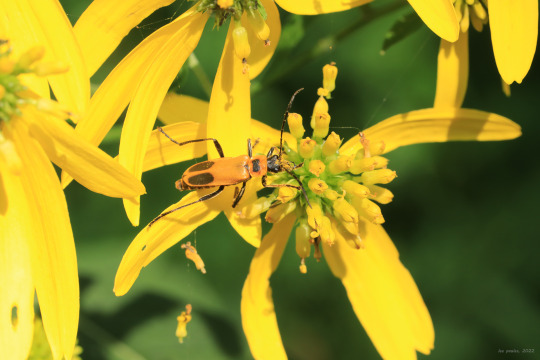
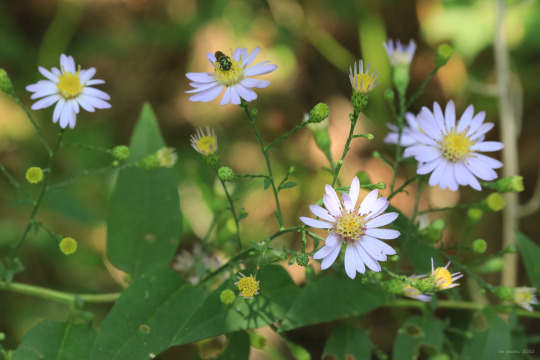

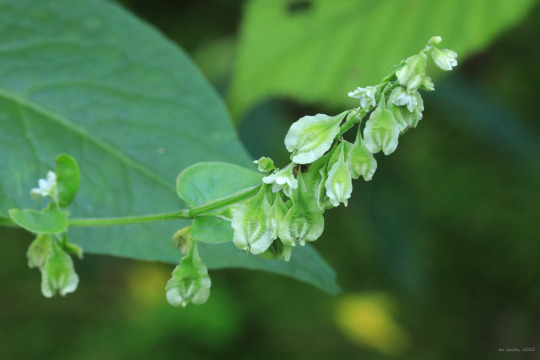

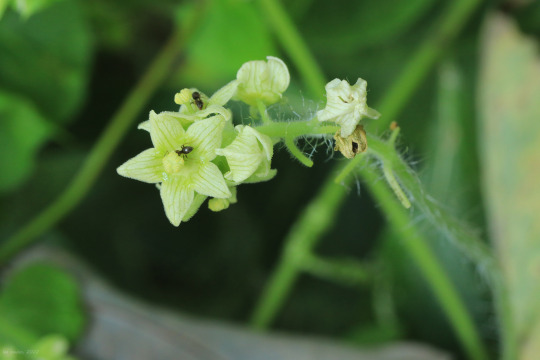




A few late summer odds and ends from a bike ride on the Mon River Trail yesterday. The asters are really starting to pop now as the days grow noticeably shorter and autumn closes in. A number of interesting vines are also in bloom and producing fruit for wildlife before the first frost. Climbing false buckwheat (Fallopia scandens) and oneseed bur cucumber (Sicyos angulatus), a member of the gourd family, are both aggressive twining vines with distinctive foliage, flowers, and fruits.
From top: a goldenrod soldier beetle strikes nectar gold on a wingstem flower (Verbesina alternifolia); Short’s aster (Symphyotrichum shortii), a really beautiful perennial often found growing in dry to mesic oak-hickory woods with limestone near the surface; climbing false buckwheat, a delicate twiner whose pendulous fruit has three ruffled sides, like pantaloons; oneseed bur cucumber, whose bristly fruit can cause painful stings; crooked-stemmed aster (Symphyotrichum prenanthoides), also known as zag-zag aster, whose stems often zig-zag between the nodes of its spatula-shaped leaves; and the glorious New England aster (Symphyotrichum novae-angliae), one of the most important pollinator plants of late summer and early autumn.
#appalachia#vandalia#west virginia#late summer#flora#wildflowers#mon river trail#verbesina alternifolia#wingstem#symphyotrichum shortii#short's aster#fallopia scandens#climbing false buckwheat#sicyos angulatus#oneseed bur cucumber#bur cucumber#symphyotrichum prenanthoides#crooked-stemmed aster#crooked-stem aster#zig-zag aster#symphyotrichum novae-angliae#new england aster
41 notes
·
View notes
Text
Wildflower Mysteries Along The South Fence...
Wildflower Mysteries Along The South Fence…
Humulus lupulus (Common Hops) on 9-2-22, #908-14.
Hello everyone I hope this post finds you all well and enjoying the cooler temperatures. I have been enjoying the cooler temps, but that means wildflower hunting for the year is coming to an end. I suppose that is OK for a while. That means I can update the plant pages and add new pages for what was discovered in 2022. I added 47 new species for…
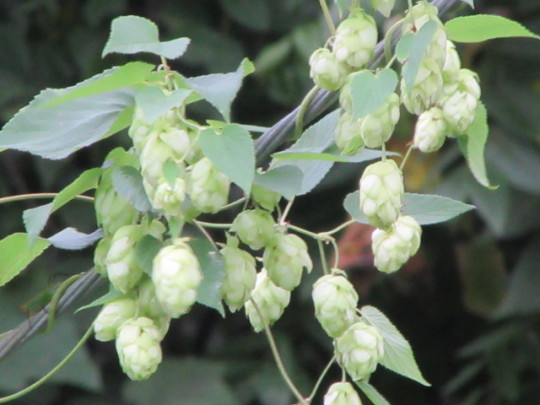
View On WordPress
#Amphicarpaea bracteata (American Hog Peanut)#Fallopia scandens (Climbing False Buckwheat)#Humulus lupulus (Common Hops)#Pisaurina mira (American Nursery Web Spider)#Toxicodendron radicans (Poison Ivy)
0 notes
Text
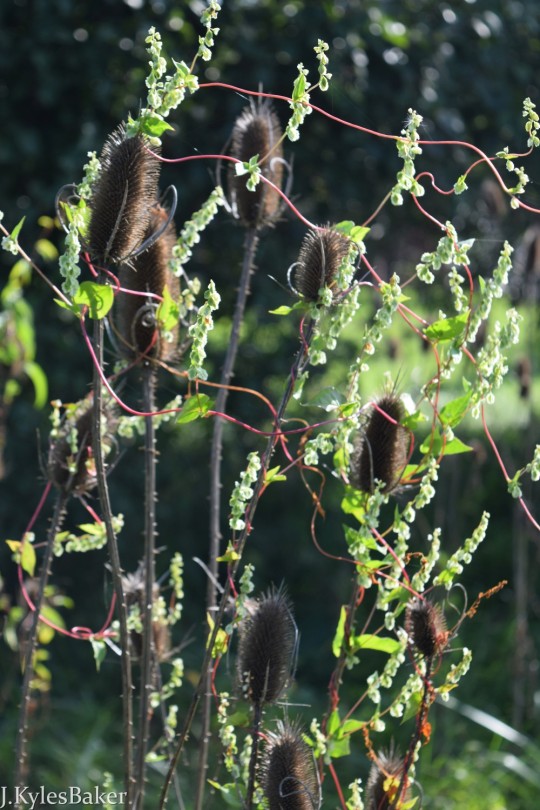
Climbing False Buckwheat (Fallopia Scandens) Vine Entwining Dried Common Teasel (Dispascus Fullonum) Seed Heads
1 note
·
View note
Photo
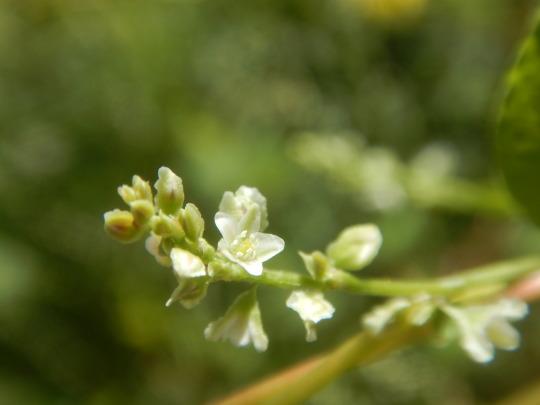

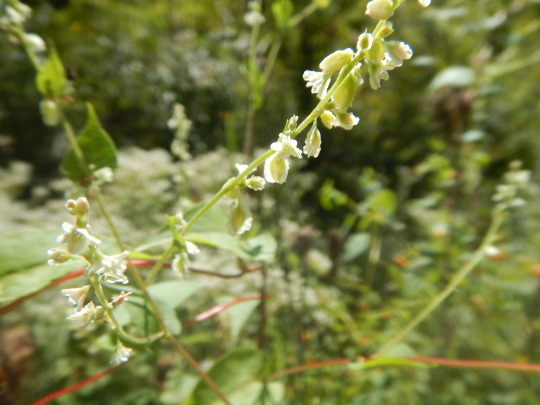

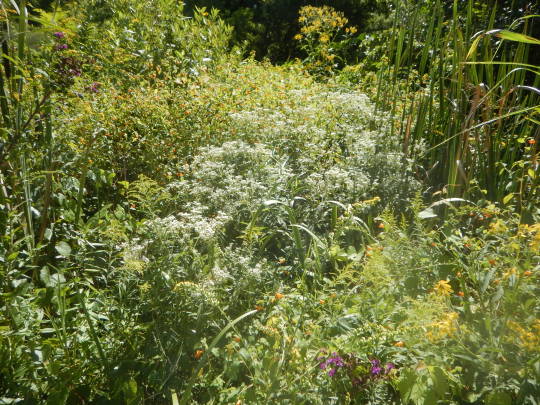

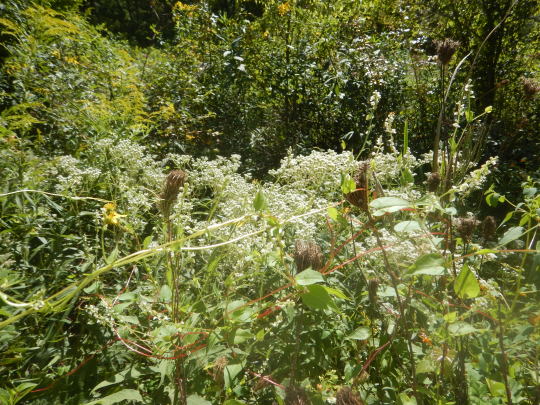
Climbing false buckwheat
Fallopia scandens, pretty common everywhere; especially Warren co, Greene co,. and Clark co.
Fallopia scandens is not a fen obligate, nor is it a wetland obligate; but, it is more commonplace along mesic forest edge and especially around riparian zones where its commonly twining through the rag weed or what ever annual is making it’s self the most present. Fallopia scandens lacks true ochrea/ocrea making it part of the true buckwheat group(Not generas however) and not part of the smartweed group instead the plesiomorphic traits are more of synapomorphic traits and are in the seeds and inflorescence not directly in the flower.
Synapomorphy: (shared by the groups common ancestor and it’s direct descendants) Polygonaceae has similar inflorescence and seed formation through out. Only subtle differences occur.
Plesiomorphy: Ochrea is a good example of this and occurs in two major groups or two clade branches before disappearing in other liniages. the two clades have retained this trait from an (ancestral trait) An evolutionary trait that is homologous within a particular group of organisms but is not unique to members of that group (compare apomorphy) and therefore cannot be used as a diagnostic or defining character for specifying genus but is an additive morphological character for keying out the groups:
Colloquial true smart weeds: Persicaria spp. (Knotweed) and Polygonum spp. (Knotgrass)
Colloquial true buckwheats: The Eurasian genus, Fagopyrum spp., and the North American genus, Eriogonum spp.
When a new species occurs, an autoapomorphy is evolved in the family that makes this species distinct enough to be broken off as it’s own species. Over evolutionary time this species can evolve in multiple directions and functionally preserve this old autoapomorphy in it’s different evolved taxa making them synapomorphies until they become ranked as plesiomorphy once the trait is gone in some groups but common in others.
I suppose in cladistics the hardest jargin to wrap your head around is apomorphy. what is it? From what i’ve understood you can have convergent evolution of a retained organ in two new groups that are two seperate autoapomorphies so similar and evolved at the same time that it becomes impossible to recognize the distinction outside of genetics. With this issue you’ll notice that while the two groups are linked by a common ancestor, their common ancestor did not have this morphological character present in both closely related groups.
25 notes
·
View notes
Text
Hormone balance is essential to healthy living
There is so much to understand about balancing hormones that it is difficult to know where to begin. Hormones are messengers in the body that travel through the bloodstream into the organs, lymph and tissues of our bodies. The endocrine glands secrete certain hormones in the body which includes to the pineal gland, pituitary, pancreas, thyroid, ovaries or testes, parathyroid, hypothalamus, adrenals and gastrointestinal tract. Just small hormonal changes can cause significant physiological changes in the body, including weight gain and forgetfulness.
Smart health is to have your hormone levels tested periodically, just like a mammogram or Pap smear. Imbalances have serious consequences and if not kept in check, chances of cancer increase, as well as other diseases like diabetes. Many cancers are hormone related. couple seeking bisexual men Estrogen dominance may be accountable for breast, prostate, cervix, endometrial, uterine, and ovarian cancer as well as fibroids. Estrogen deficiency can also cause bladder and urinary tract infections, especially in menopausal women.
Progesterone deficiency can cause cancer as well, including uterine cancer and fibroids. The thicker the lining of the uterus, the higher the chances of cancer are. Natural progesterone cream can help to reduce the lining of the uterine wall and eliminate fibroids in as little as two months; so the cream is not something that needs to be taken forever.
Maintaining a healthy liver is also extremely important to managing uterine fibroids, because it is responsible for eliminating toxins from the body. A healthy liver converts the strongest estrogen to "safe estrogen." Remember that certain medications including birth control pills, fertility drugs and hormone replacement therapy can also create a state of estrogen dominance. Excess estrogen can be promoted by liver congestion, bowel toxicity, stress, hypothyroidism, inflammation, and many of the estrogens below.
Supplementing with DIM can help reduce the steady climb of estrogen. It has been reported that DIM or di-indolylmethane can reduce estrogen buildup. It does this by converting bad estrogen into good estrogen by-products. It is also said to help reduce a swollen prostate.
Many researchers also attribute the high incidence of cancers to the presence of environmental estrogens in our food and products today. Phytoestrogens are plant-derived xenoestrogens and are consumed by eating phytoestrogenic plants. They imitate estrogen, but are not generated within the endocrine system; Phytoestrogens can be either synthetic (man-made) or natural chemical compounds.
Here are some examples of hormones, food or toxins that may alter balance:
Xenoestrogens: artificial scents, air fresheners, food additives, preservatives, commercially raised poultry and cattle, household cleaners, detergents, car exhaust and indoor toxins, personal care products (shampoos, lotions, perfumes, make up, deodorants), oral contraceptives, prescription drugs, paints, lacquers and solvents, pesticides, herbicides, fertilizers, Styrofoam products, plant estrogens (soy, flaxseed), plastics, canned foods, GMOs and plastic food wrap.
Naturally Estrogenic: alcohol, alfalfa, anise seed, apples, barley, beets, black-eyed peas, blue/black cohosh, cherries, chickpeas, clover, cucumbers, dairy, dates, dong quai, eggs, eggplant, fennel, flaxseed, flour, garlic, hops, lavender, licorice, meat, oats, olive oil, olives, papaya, parsley, peas, peppers, plums, pomegranates, poppy seed, potatoes, pumpkin, red beans, red clover, rhodiola, rose root, rhubarb, rice, sage, saw palmetto, sesame seeds, soybean, sprouts, sugar, sunflower seeds, tea tree oil, tomatoes, wheat, white rice., soy, canola, safflower and corn oil.
Foods That Inhibit Estrogen: artichoke, asparagus, avocados, berries, brazil nuts, broccoli, buckwheat, cabbage, celery, citrus fruits (except apples, cherries, dates, pomegranates), figs, garlic, grapes, green beans, green tea, melons, nuts, onions, pears, pineapples, seaweed, squash, tapioca, white flour, white rice.
Balancing Hormones:Moringa, carrots, chia seeds, coconut oil, cod liver oil, Diindolylmethane (DIM), false unicorn, gelatin, kelp, maca root, magnesium, olive leaf extract, parsley, quinoa, red raspberry, Vitamin D, flaxseed oil*.
Increases Progesterone: beta carotene, chaste berry, dill, legumes, oregano, seeds, sweet potato, thyme, turmeric, vegetables, Vitamin B6, C & E, L-arginine, wild yam. There are also natural progesterone creams.
*A note about flaxseed oil... According to Dr. Sears, "Research shows that adding flax oil to foods rich in sulfated amino acids, such as cultured dairy products (i.e., cottage cheese), vegetables of the cabbage family... helps the essential fatty acids become incorporated into cell membranes." In fact, The Budwig Center has a flaxseed oil and cottage cheese protocol that has been reported by their patients to eliminate tumors, degenerative diseases, balance hormones, cure Arthritis, Asthma, Fibromyalgia, Diabetes, Blood Pressure, Multiple Sclerosis, Heart Disease, Psoriasis, Eczema, Acne and more.
1 note
·
View note
Text
Today’s Poem
Netflix Green Man
--John Hennessy
Netflix the Green Man and any screen
becomes a vineyard. Episodes cluster
and climb, trellis narrative. Between
the corn and lichen, creepers muster
nine lives. They grow, divide, and splice,
steal scenes by running fox grape, bittersweet,
return on any handheld device
as moonseed, woodbine, dodder, buckwheat —
false buckwheat — note, though star- and heart-shaped.
He trucks some mascot for our kids, glad-hands
a sidekick dressed to burrow, root, and take
them through their lessons rattling dad’s
bouzouki nerves, mom’s percussive bones.
Return, that ritual button, pressed like wine
in HD, when end credits jolt. Stop time,
we’re keyed up. Eternal return? Eternal jones.
0 notes
Photo


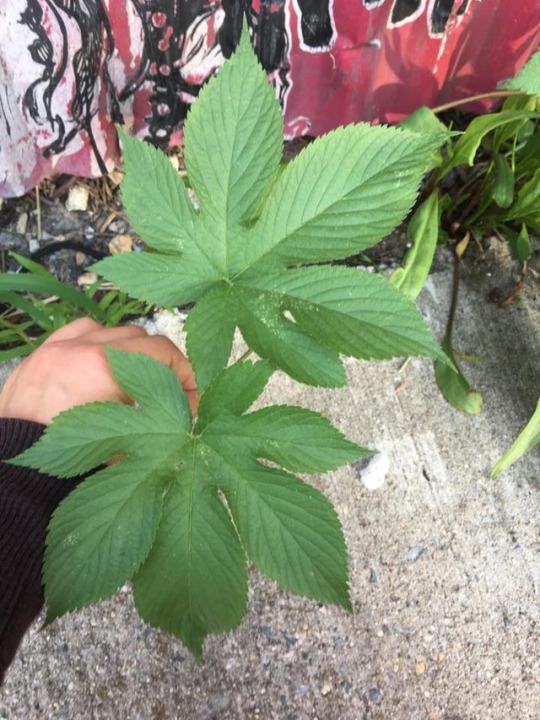
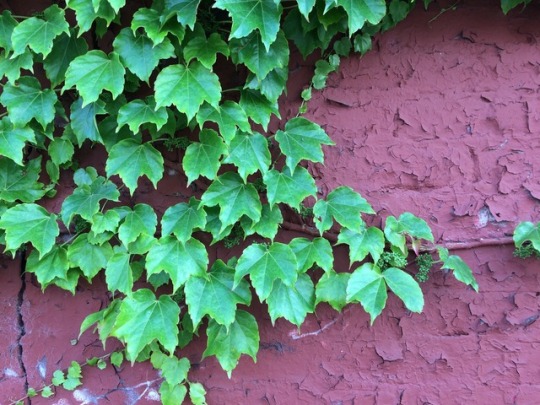
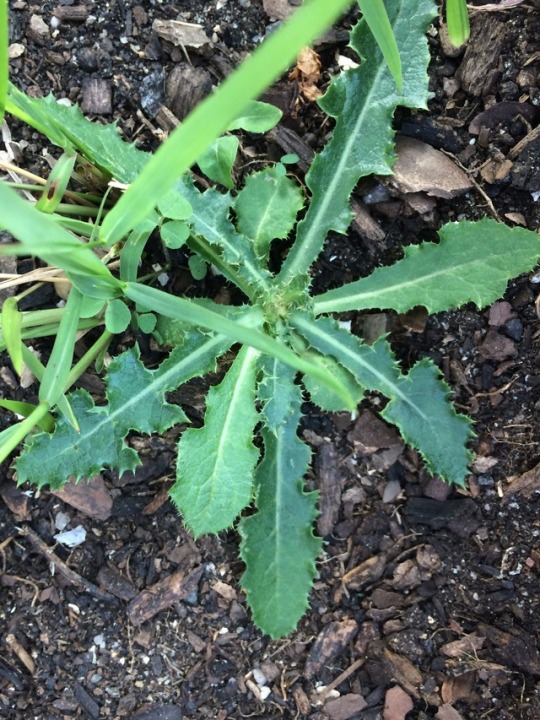



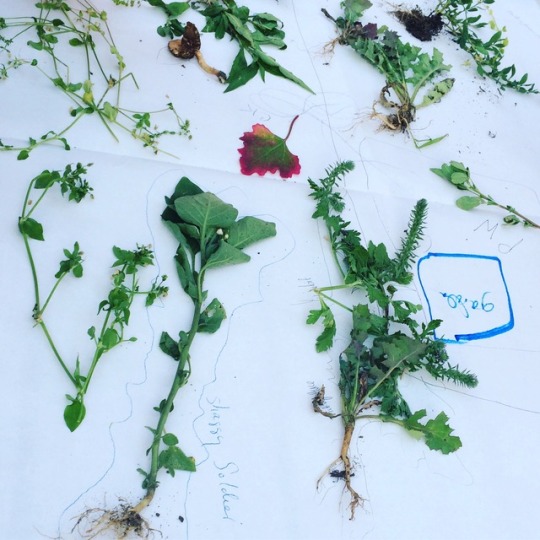
Some glimpses of the Weedy Resistance workshop at @pioneerworks in Red Hook Brooklyn, co-led by Marisa Prefer in collaboration with Sarah Chandler
SELECTED WEEDY PLANT SPECIES LIST:
Boston Ivy (Parthenocissus tricuspidata) - a flowering plant in the grape family native to eastern Asia in Japan, Korea, and northern and eastern China.
Climbing False Buckwheat (Fallopia scandens) - in the Knotweed family (Polygonaceae)
Black-bindweed (Fallopia convolvulus) is a fast-growing annual flowering plant in the family Polygonaceae native throughout Europe, Asia and northern Africa.
Prickly Lettuce (Lactuca serriola) - an annual or biennial plant in the dandelion tribe within the daisy family. Can be eaten as a salad, The Ancient Greeks also believed its pungent juice to be a remedy against eye ulcers and Pythagoreans called the lettuce eunuch because it caused urination and relaxed sexual desire. The Navajo used the plant as a ceremonial emetic.
Horseweed (Erigeron canadensis) - an annual plant native throughout most of North America and Central America. The Zuni people insert the crushed flowers into the nostrils to cause sneezing, relieving rhinitis. A tincture can be made from the dried flowering tops of the plants. Horseweed is a preferable material for use in the hand drill method of making friction fire.
Lambs Quarters (Chenopodium album) -extensively cultivated and consumed in Northern India as a food crop. Each plant produces tens of thousands of black seeds. These are high in protein, vitamin A, calcium, phosphorus, and potassium. Quinoa, a closely related species, is grown specifically for its seeds. The Zuni people cook the young plants' greens.
Chickweed (Stellaria media) annual plant native to Europe, Stellaria media is edible and nutritious, and is used as a leaf vegetable, often raw in salads.
Common milkweed (Asclepias syriaca) - ‘silk weed’ in German, ‘little cotton’ in Spanish can be used to make rope. Milky juices can be used for bug bites.
Henbit (Lamium amplexicaule) Henbit dead-nettle is native to the Mediterranean. The leaves, stem, and flowers of the plant are edible and have a slightly sweet and peppery flavor, similar to celery.
Common Dandelion (Taraxacum officinale) - a flowering herbaceous perennial plant of the family Asteraceae - The flowers are used to make dandelion wine, the greens are used in salads, the roots have been used to make a coffee substitute (when baked and ground into powder) and the plant was used by Native Americans as a food and medicine.
Bittersweet nightshade (Solanum dulcamara) - a species of vine in the potato genus Solanum. native to northern Africa, Europe, and Asia, but has spread throughout the world.
Oriental bittersweet (Celastrus orbiculatus) - The leaves are round and glossy, 2–12 cm (0.8–4.7 in) long, have toothed margins and grow in alternate patterns along the vines. Small green flowers produce distinctive red seeds which are encased in yellow pods that break open during autumn.
Shaggy Soldier (Galinsoga quadriradiata) - a species of flowering plant in the daisy family. Its native home is central Mexico.
Mugwort (Artemisia vulgaris) - native to temperate Europe, can be used as a tea, bug repellant and is edible.
Japanese Hops (Humulus japonicus) - Originally found in temperate parts of Asia - The composition and chemistry of the oils found in Humulus japonicus differs from its relative the common hop, Humulus lupulus. As a result, the Japanese hop is not used in the production of beer.
Virginia Pepperweed (Lepidium virginicum) - ative to much of North America, including most of the United States and Mexico and southern regions of Canada - The plant is edible. The young leaves can be used as a potherb, sauted or used raw, such as in salads. The young seedpods can be used as a substitute for black pepper. The leaves contain protein, vitamin A and vitamin C.
Tree of Heaven (Ailanthus altissima) - ative to both northeast and central China, as well as Taiwan - It was mentioned in the oldest extant Chinese dictionary and listed in countless Chinese medical texts for its purported ability to cure ailments ranging from mental illness to baldness. The roots, leaves and bark are still used today in traditional Chinese medicine, primarily as an astringent.
Virginia Creeper (Parthenocissus quinquefolia) - a species of flowering plant in the grape family, Vitaceae. It is native to eastern and central North America,
Spotted ladysthumb (Persicaria maculosa) - an annual plant in the buckwheat family, Persicaria maculosa contains persicarin and tannins. In medicine, redshank is used against diarrhoea and infections. The leaves and young shoots may be eaten as a palatable and nutritious leaf vegetable.
Asiatic Dayflower (Commelina communis) - an herbaceous annual plant in the dayflower family. In China it is used as a medicinal herb with febrifugal, antipyretic, anti-inflammatory, and diuretic effects. Additionally, it is also used for treating sore throats and tonsillitis.
Common Grapevine (vitis vinifera) - native to the Mediterranean region, central Europe, and southwestern Asia; Use of grapes is known to date back to Neolithic times, following the discovery in 1996 of 7,000-year-old wine storage jars in present-day northern Iran.
Japanese honeysuckle (Lonicera japonica) - significant source of food for deer, rabbits, hummingbirds and other wildlife.
Broadleaf Plantain (Plantago major) native to most of Europe and northern and central Asia; edible rich in protein, calcium, beta carotene, medicinal uses - for wounds/cuts
Seaside Goldenrod (Solidago sempervirens) native to eastern North America and parts of the Caribbean; highly tolerant of both saline soils and salt spray, and is usually found growing on coastal dunes and in salt marshes.
1 note
·
View note